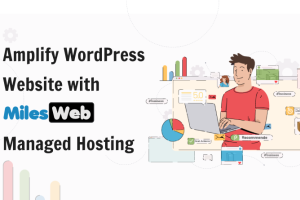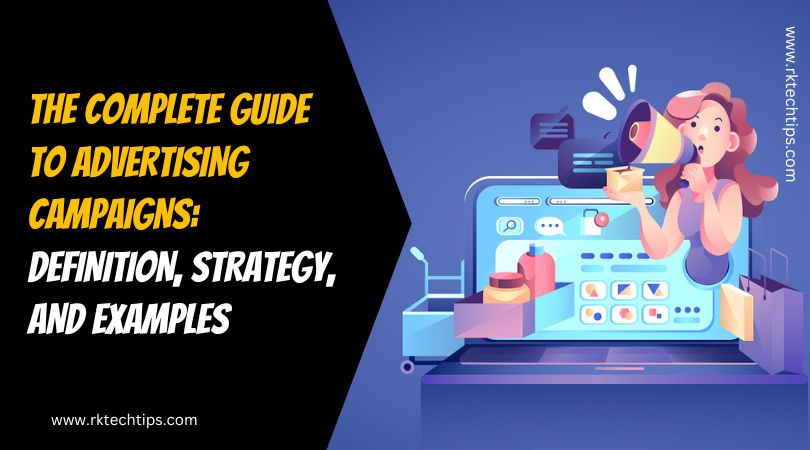A good advertising campaign has a way of sticking with us long after being shown or even after we have made a purchase.
But why? This is mainly because advertising campaigns tend to be memorable – because of their consistent messaging as well as storytelling.
Companies can use advertising campaigns to not only guide consumers to do a certain thing, but also to evoke emotions, and give the brand a personality and identity.
However, this can be difficult for a company to do in-house, as they might not have the necessary expertise, time or know-how to create, launch and keep track of any advertising campaigns.
As such, this task is usually outsourced to an advertising or international advertising agency that will handle the operations, while companies can focus on what they are actually good at.
Let’s take a look at what an advertising campaign is, why they are important, and how to create one from scratch.
What is an advertising campaign?
Simply put, an advertising campaign is a specifically designed strategy that features a set of advertisements all focusing on a single message.
Much like the average ad, they are all targeted toward a certain audience and intended to meet specific business goals.
To obtain the best results, advertising campaigns must be clear, organized, and follow a strategic plan. This will ensure businesses can raise awareness and interest in their products and services.
However, unlike a single ad, advertising campaigns can be diversified over a wide range of media channels over a particular period of time.
Media channels can range from traditional (such as newspapers, magazines, radio, and television), all the way to digital (social media, display ads, and video).
This can make an advertising campaign more cost-effective when compared to just a one-and-done ad.
Why are advertising campaigns important?
One thing that makes ad campaigns important for businesses and brands is that it gives them a focused edge when it comes to advertising.
Because all the ads need to be interconnected and carry the same brand message, this means everything must be meticulously planned out in addition to knowing exactly who to target.
Ad campaigns also help businesses to grow, as using multiple channels in an ad campaign can get the word out about a business’s product or service to as many people as possible.
Ad campaigns also allow brands to compare and contrast which methods and channels have the most engagements, by taking a look at the analytics.
This way, companies know which tactics work best, what drawbacks there are to the campaign, and how to improve for next time.
How to create an ad campaign?
When running an ad campaign, there are a few key things to think about in order to be successful.
These steps include thinking about your campaign goals and objectives, identifying your target audience, in addition to choosing the best channels to spread your message. Here are a few key points below:
# Set campaign goal
Although most people might think of the number of sales when deciding a particular business goal or objective, there remain plenty of other goals to choose from. These can range from:
- Announcing and launching new products
- Gaining new clients or customers
- Promoting current products
- Increasing brand awareness
- Communicating your unique selling point
- Motivating leads to make a purchase
Whatever your goal may be, it’s important to identify it before proceeding with launching an ad campaign. Remember, it’s always better to have a goal to keep you on track before you jump right in.
# Define target audience
To make sure your ad campaign is targeted to the right people, you must define your target market or audience.
If your campaign is not targeted to the proper audience, then it doesn’t matter how good it is – it will most likely not be relevant and as such, be summarily ignored or dismissed.
Be sure to consider factors such as age, gender, marital status, social class, education level, likes, hobbies, habits, and specific pain points.
It is also best practice to create a target audience profile because it makes it easier to personalize your campaign’s message and reach audiences that are likely to convert.
You can also include additional factors such as your target audience’s values, preferred channels to be on, preferred content types, as well as buying behavior.
# Segment audience
After you have clearly defined your target market and audience, you can then break them down even further.
This step usually consists of dividing your audience into different groups based on the product or service you want to sell to their particular demographic.
This way makes it easier to create advertisements that are targeted toward the interests of a specific audience.
Your brand messaging can become more focused, ensuring they are more likely to interact with your ad campaign and take additional action.
Try to put yourself in their shoes and identify whether a particular product or service is relevant to them or can solve any problems they might be having at the moment. Some factors might include:
- Location segmentation: If you sell home equipment, you might want to segment things by region or location. For example, you might target customers living in colder regions with a snowblower, while, those in a warmer region might be met with a fan ad campaign.
- Gender segmentation: You might want to create two different website homepages catering to different genders – for instance, if you sell designer boots or shoes.
- Purchasing behaviour segmentation: A high-end luxury brand should emphasise the uniqueness of its products or services and how it makes its audience feel (does it make them feel like they are living the high-end life?) whereas a cheap dollar store should appeal to comparison shoppers or those who have a tight budget.
- Relationship segmentation: If you are a chocolate store, you might want to highlight certain high-end chocolates as gifts for someone’s partner or people in relationships, especially on gift-giving holidays like Valentine’s Day and Christmas.
# Decide on ad Channels
Only after you have figured out your target audience and objectives, can you begin to decide which channel(s) your ad campaign should run on. These can include:
- Social media: Pretty self-explanatory, but this is where a brand advertises on social media platforms. The type of social media platform you choose depends on which one your audience is on the most, and which platform can best get your brand message across. There are plenty of social media platforms to choose from, including Instagram (for visuals), YouTube (long-form videos), TikTok (short-form videos), Twitter (quick updates and news), and Facebook (communication). Also, remember that each platform provides different formats for an ad, pick the one that best resonates with your audience or fits your brand objectives the best.
- Email marketing: Advertising through email is a fantastic method of acquiring new leads. It can also help a brand to make conversions. This is because audiences giving you their emails indicates they already have some interest in your business. You can follow up with more information on your products or services (or any new announcements) so they are likely to purchase in the future.
SEO and SEM: On a slightly different note, this refers to paid advertisements on search engines such as Google.
Usually, ads are paid using the pay-per-click (PPC) method. This is often used to boost a company’s position in search engines so that you can drive more traffic to your website.














